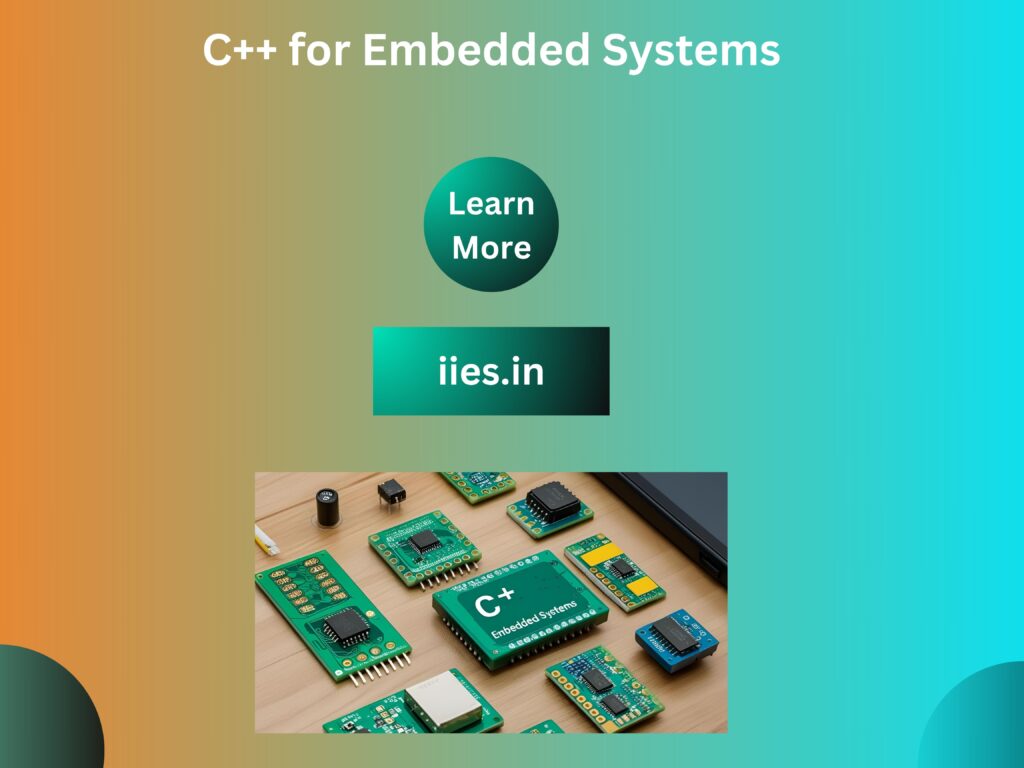
C++ is increasingly becoming a go-to language for embedded systems, offering a powerful mix of low-level hardware access and high-level programming features. While C has traditionally dominated this space due to its simplicity and tight control over hardware, the growing complexity of embedded applications now demands more flexible and maintainable codebases—areas where C++ excels.
From microcontrollers to real-time operating systems (RTOS), C++ enables developers to write efficient, modular, and reusable code without sacrificing performance. Its object-oriented features like classes, inheritance, and templates allow for better organization and scalability, making it ideal for larger, more sophisticated embedded software projects.
Moreover, with the rise of IoT, automotive systems, industrial automation, and consumer electronics, there’s a growing demand for embedded software that can adapt quickly, be maintained easily, and meet strict performance constraints. C++ meets these needs by offering a balance between bare-metal control and modern programming abstractions.
In this article, we’ll explore why C++ is a strong choice for embedded systems development, its key benefits, common challenges, and where it fits best—from writing device drivers to integrating with real-time operating systems.
Whether you’re working with microcontrollers, real-time operating systems (RTOS), or bare-metal programming, C++ can be an invaluable tool for creating efficient and robust embedded software.
C++ has long been associated with high-performance applications, such as game development, system software, and enterprise-level applications.
However, its role in embedded systems programming is equally significant, offering a blend of control over hardware, performance efficiency, and advanced features that modern embedded systems demand.
While C has traditionally been the go-to language for embedded programming due to its low-level hardware control and performance, C++ has steadily emerged as a powerful alternative.
Combining efficiency with object-oriented features, C++ offers a compelling blend of abstraction and control that’s well-suited for embedded development.
With classes and namespaces, C++ enables modular designs. You can separate hardware drivers, communication stacks, and application logic cleanly, promoting reuse and easier maintenance.
Inheritance and polymorphism allow hardware abstraction layers (HALs) to be reused across different platforms. This reduces development time when targeting multiple microcontrollers.
Type Safety
Stronger type checking in C++ helps detect bugs at compile time, making code more robust, especially in safety-critical applications like automotive and medical devices.
Inline Templates and Performance
Templates are resolved at compile time, meaning there’s no runtime penalty. Embedded libraries like STL-lite or ETL (Embedded Template Library) offer powerful, optimized containers tailored for microcontrollers.
While C++ offers many benefits for embedded systems, it’s not without its challenges. Understanding these challenges is crucial for successfully using C++ in embedded development.
Embedded systems often have extremely limited memory (RAM and ROM). C++’s features like classes and templates can introduce overhead if not carefully optimized. Developers need to be conscious of memory usage, particularly for large data structures and classes. Techniques such as using new and delete carefully, avoiding unnecessary dynamic memory allocation, and optimizing code for smaller footprints are essential in embedded C++ development.
In many embedded systems, real-time performance is critical. While C++ can handle real-time requirements, developers must ensure that the software meets strict deadlines. C++ constructs like exceptions and dynamic memory allocation can introduce latency, so these features may need to be avoided or carefully managed in real-time applications.
C++ compilers for embedded systems can vary widely between different microcontroller architectures. Some embedded systems may not fully support the latest versions of C++ standards (e.g., C++11 or C++14). Ensuring that the toolchain is compatible with the hardware and the selected features of C++ is critical for a successful embedded project.
C++ classes can encapsulate peripheral drivers (like UART, I2C, SPI). This improves testability and separation of concerns.
Many real-time operating systems (FreeRTOS, Zephyr) now support C++. Tasks, queues, and mutexes can be wrapped in C++ abstractions for better readability.
Using classes to represent states and transitions simplifies complex behavior in devices like thermostats or vending machines.
Indian Institute of Embedded Systems – IIES